
If you thought you'd ticked Mallorca then think again - 2016 brings a new guidebook and a wave of development on the island. In this article we cover 8 new sport climbing crags which have sprung up thanks to dedicated developers taking advantage of the vast amount of quality rock on offer. The venues in this article are all sport crags, but there has also been ongoing exploration for deep water soloists. Check out Daimon Beail's Deep Water Soloing article here.
The Mediterranean island of Mallorca boasts glowing orange and yellow limestone that is reminiscent of its Spanish mainland crag counterparts, but with the added appeal of sun, sea, sand, quieter crags and cheap flights. It's difficult to choose one distinct style of climbing here - such is the variety of the rock formations - but you're bound to find a crag which suits you, be it an easy-access urban crag nestled between multi-million-Eurovillas, or an atmospheric cave suspended above the sea.
Here are eight fantastic new locations in descending order of grade friendliness; beginning with the easier crags...
Sa Mola de Felantix
Oh, how a crag can be transformed. We first visited this place back in 2010 and, apart from the fascinating bodego you walk through to get to the crag, it had little going for it. The routes were old with poor gear and there were only a handful of them. Acting on a tip-off we turned up to check out some new developments and the difference was incredible. The place has been totally transformed and is now one of the best low-to-mid grade crags on the island with a great set of varied routes on some fantastic rock formations. Upon arriving at the crag, there was a guy hacking away in the undergrowth whom we started chatting to. This turned out to be Armin Helbach who, together with his wife Kerstin, are responsible for all this work. His enthusiasm was infectious and we had a great day sampling the routes. You should also have a wander around the old bodego - featuring a dishevelled polystyrene dinosaur - but don't spend too much time muttering about health and safety and how this would be cordoned off in the UK!
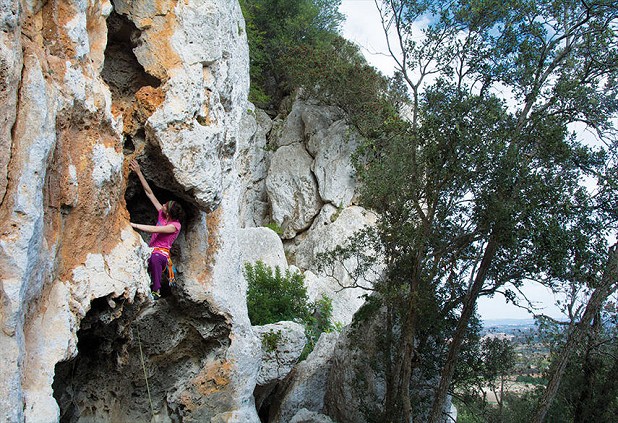
Ca's Català
I suspect this crag has been around for a while since it is well used by the locals, being close to Palma and with easy, quick access. Despite the slightly urban setting the outlook from the crag is stunning and the rock and climbing on offer are excellent. Most of the routes tend to be technical and steep although there are some superb easy-angled slab climbs here at either end of the crag.

Torre d'en Beu
The climbing at Santanyi (Tijuana) has always been one of the great attractions of Mallorca. Its relatively warmer and more sheltered climate with a set of brilliant routes above a rock platform means that most people have made the drive down to this corner at least once on their climbing trips to the island. Now there is a second destination to check out and what a great place it is. There aren't as many routes as Tijuana, but Torre d'en Beu has a smart set of varied routes in an equally inspiring setting to its near-neighbour. Development is continuing so expect more new stuff here.
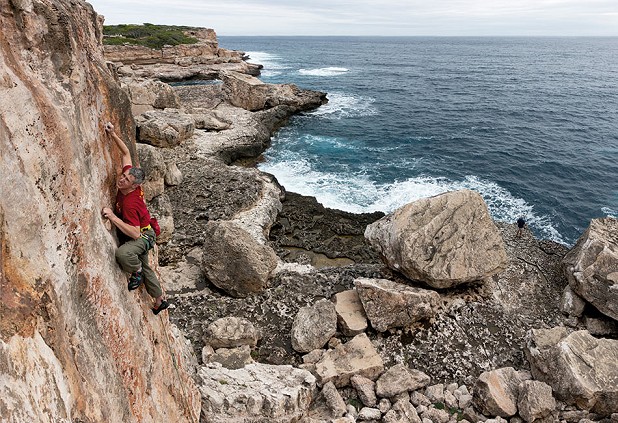
Caimari
The crags to the north of the little village of Caimari, near Inca, have always been popular. Previously known as Las Perxes, we have renamed the collection after the village following the addition of the new sector of Comuna de Caimari. Arguably this is the best crag of the lot with a superb set of routes across the grade range. There are some excellent slabby 4s, 5s and 6s plus an increasing number of harder routes put up by the crag's main developer Timy de Mendoza.
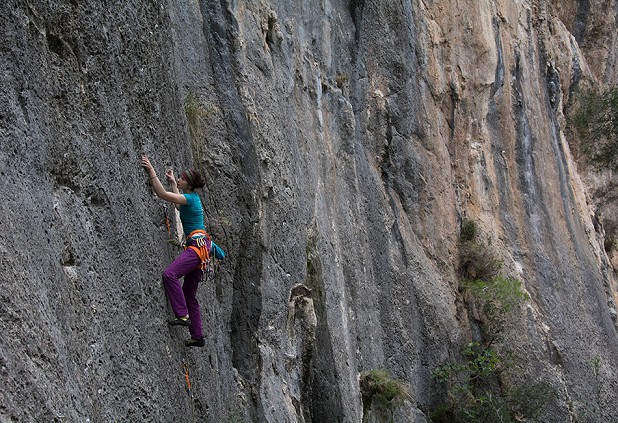
Penyal d'es Grau
High in the hills on the northwest side of the island is a small crag on a relatively hidden wall with a set of excellent routes. The location means that the crag takes a while to reach from almost everywhere but it is certainly worth it to sample the current 20-odd routes here. We managed to climb most of them in a day by targeting separate routes each (and having a prolific Natalie in our midst). Great climbing with some intense technical walls and a couple of longer stamina climbs over on the left.

S'estret
S'estret has been one of the most popular crags on the island for many years, mainly because of its Top50 slab climbs. However, when driving up the road towards Valldemossa, who can fail to have noticed the vast expanse of north-facing rock on the other side of the road from the popular sectors. For an island that can sometimes be quite hot, north-facing crags are often at a premium, especially ones that offer a good grade spread. Ex-pat Jeremy Ginn and local Miguel Requena have done an amazing job of developing the white walls which now have over a hundred quality routes from 4c upwards although mostly in the 6a to 7a range. It can be cold here in the winter and don't be fooled by the cover photo of the guide - we had to wait for a short sun-window in the early evening to grab that shot.
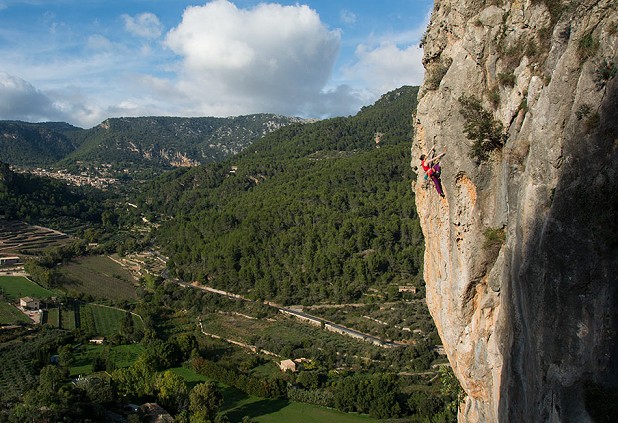
Cala Llamp
The massive headland of Cala Llamp is one of those places that promises a great deal, but so far has only received a small amount of development. What there is though is stunning and this is definitely one of the most atmospheric crags on the island. If you only turn up to climb the crazily exposed 6a+ of Poc a Poc I Bona Lletra (6a+), then you will have a rewarding day. For those up to harder grades there are some amazing stamina tests on offer, although be warned, good conditions can be elusive. We met Eneko Pou (brother of Iker) and he told us that he had never seen it so dry there. Pick a coolish day with a westerly breeze and you should be okay. This is another place where there is likely to be some brilliant new development, having seen a speculative topo that indicates what is planned. They are doing a great job as well making decent via ferrata paths to reach the higher sectors. It is also possible to combine a visit here with the nearby C'an Formiga which has a small set of easier routes and is new since the 2011 Rockfax guidebook.
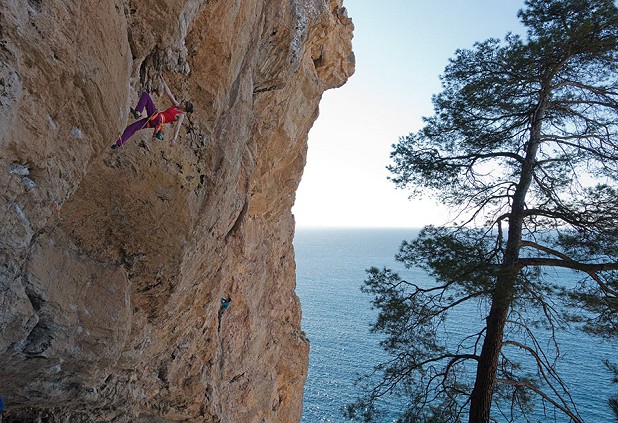
Es Grau des Ruc
When it gets hot on Mallorca most of the locals head into the hills to Gorg Blau. Another place to consider though is the shady north-facing walls of Grau des Ruc. The crag is situated further up the Caimari road, although it can still be quite tricky to find, being well hidden down a scratchy, rocky slope. Once there you will find yourself in a haven of shady coolness and beneath a magnificent wall of perfect orange rock. There isn't much here in the lower grades though, but enough to keep experienced climbers busy for several visits.
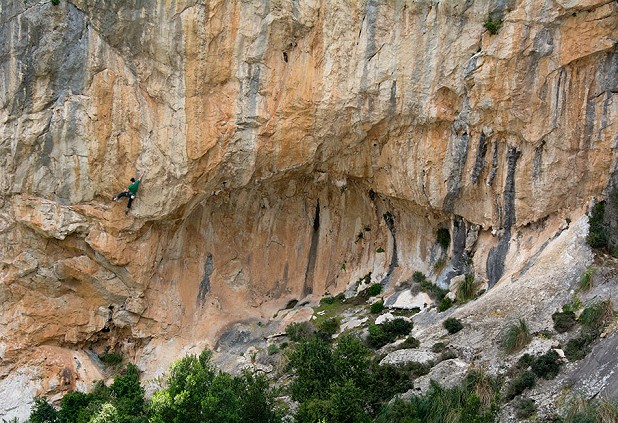
Logistics
When to Go
The climbing season runs from late September to May. During this time if you pick the orientation and elevation of crags carefully the air temperature is usually ideal although in the depths of winter the mountain crags can be cold and Santanyi and Cala Magraner will be unbelievably hot on sunny days. Rainfall is not as low as on the mainland and at times can be persistent especially in the vicinity of the mountains to the north. After heavy rains seepage will affect some lines although the rock itself dries very quickly. Summer is very hot although the shady mountain crags will offer some possibilities.
Getting There
Palma is the main airport on the island and is the third largest airport in Spain so it accommodates flights from all over the world. The airport is home to a large number of car hire companies on site but it is always advisable to book ahead.
Accommodation Advertise here
No Premier Listings found in this area
There are many options all over Mallorca that range from small apartments to huge Villas. Palma itself is a very lively place and would suit those looking for a full night life. Soller is a quiet spot out of season. Puerto Pollensa is a very nice small coastal resort that has bars and restaurants that are open out of season. The resorts on the southeast coast are a long way from the bulk of the climbing areas and can be very quiet out of season.
Gear
For those only interested in single-pitch sport climbing a rack of 14 quickdraws and a 60m/70m rope is all that is needed. For the multi-pitch sport climbs an abseil device will be required. For the trad climbing a full rack, helmet and double ropes will be needed. It can get very warm and on some crags little shade can be had so a sun hat and sunscreen are well worth packing, as is a duvet for the occasional cold day in winter.
Outdoor Shops Advertise here
No Premier Listings found in this area
Food
Food on Mallorca is very easily obtained from the numerous shops and supermarkets that are located in virtually all of the island's towns. All tastes are catered for in the resorts although Mallorcan prices are generally higher than on mainland Spain. Restaurants on the smaller villages are likely to be shut on Mondays.
Other Activities
The beaches on Mallorca are legendary and the mountains are brilliant for walking. Road biking is extremely popular. The city of Palma is a very interesting place to visit whilst Soller has some good cafes.
Instructor/Guides Advertise here
No Premier Listings found in this area
Climbing Walls Advertise here
No Premier Listings found in this area
- DESTINATION GUIDE: The Best of Peak Limestone Sport Climbing (6a – 7a) 9 Jan
- REVIEW: Dolomite Crodarossa Hi GTX Boot 21 Jun, 2022
- REVIEW: Scarpa Gecko Approach Shoe 11 Jan, 2022
- REVIEW: Red Chili Mystix 16 Jul, 2021
- PHOTOGRAPHY: Three Generations on Wall End Slab 12 Jul, 2021
- REVIEW: Arc'teryx Creston Pant 25 Sep, 2020
- VIDEO: Removing Loose Rock at Horseshoe 20 Jul, 2020
- REVIEW: Montane Protium Pull-on 16 Jun, 2020
- REVIEW: Lowe Alpine Rogue 48 5 Jun, 2020
- FEATURE: The Story of a Cartoon and Satire in the '90s 1 Apr, 2020

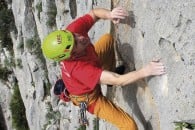

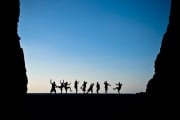







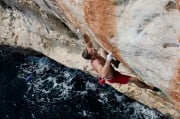


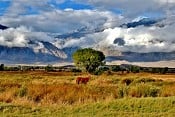

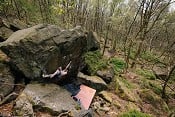
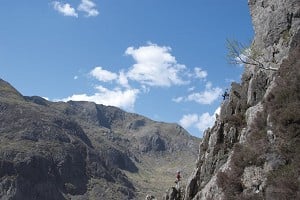




Comments